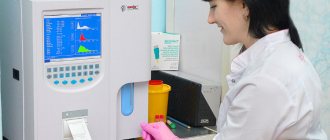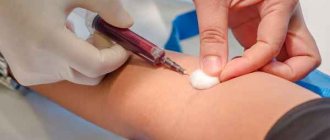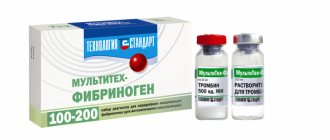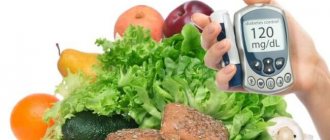Stress is a biological response to difficult situations. This causes the body to release hormones such as cortisol and adrenaline. Stress hormones help prepare the body for action by increasing the heart rate and breathing rate, creating a heightened state of alertness or arousal. This response to certain situations is designed to protect you from threats from predators, whether physical or psychological.
But how can you lower your cortisol levels if you have chronic stress? Obviously, reduce the number of stressful situations, and for faster and more effective recovery, contact us at Altimed MC.
Adrenaline and norepinephrine - what's the difference?
The content of the article
The connection between adrenaline and norepinephrine does not end with a similar name. Both chemicals belong to the group of catechol amines, synthesized from the amino acid tyrosine into dopamine, which is converted into norepinephrine. Adrenaline is an analogue of norepinephrine, formed as a result of its further transformation, thanks to the catalyzing enzyme - N-methyltransferase.
Each of these chemical compounds has its own functions in the body, and although they usually stimulate the same receptors, they are characterized by different receptor affinities and therefore show similar but different physiological functionality in the sympathetic nervous system.
- Norepinephrine
. Responsible for reactions of arousal state, mood changes and participates in the central regulation of pressure. It stimulates alpha adrenergic receptors. - Adrenaline
. Has a systemic effect. Stimulates all types of alpha-adrenergic and beta-adrenergic receptors.
Structures that produce, store, and release catechol amines into the bloodstream include the adrenal nucleus and neurons of the sympathetic system. The adrenal nucleus is responsible for 80% of the production of adrenaline, and the sympathetic system is responsible for the production of norepinephrine.
Both epinephrine and norepinephrine are responsible for inhibiting (suppressing) insulin secretion and stimulating glucagon release, causing a decrease in blood glucose levels.
Adrenaline - what is this hormone?
Adrenaline is the name of a hormone produced by the adrenal nucleus, which loosely translated from Latin and Greek means “above the kidney.” It was first isolated in 1895 by the Pole N. Cybulski. The hormone is a biogenic amine and is also found in plants. Colloquially it is called the stress, fight or flight hormone because its action triggers the body's defenses characteristic of life-threatening conditions.
The secretion of large amounts of adrenaline is activated by strong stressful stimuli and causes the body to quickly make extraordinary efforts. Epinephrine, released into the blood, works quickly and is quickly deactivated and degraded by monoamine oxidase and catechol-O-methyltransferase.
An increase in the concentration of adrenaline in the blood causes:
- a sharp increase in blood pressure, causing the brain, heart and muscles to receive higher doses of oxygen;
- increased ACTH secretion, i.e. adrenocorticotropic hormone, which triggers a number of alarm reactions in the body;
- tachycardia, manifested by an accelerated heartbeat;
- expansion of the smooth muscles of the bronchi, due to which the patient breathes easier, and the pupils;
- reduction of itching, angioedema and urticaria symptoms, which are the consequences of contact of an allergic person with a sensitizing substance;
- spasms of blood vessels of the circulatory system: veins, arteries and capillaries;
- decreased secretion of mucus and digestive juices in the digestive system and inhibition of intestinal motility and hunger;
- elevated blood sugar levels (hyperglycemia).
When should you contact Altimed MC?
It is necessary to seek qualified help when characteristic symptoms appear. The main signs of elevated cortisol :
- Rapid weight gain, mainly on the face, chest and abdomen.
- Flushed and round face.
- High blood pressure.
- Osteoporosis.
- Skin changes (such as bruising and purple stretch marks).
- Muscle weakness.
- Anxiety, depression or irritability.
- Increased thirst and frequent urination.
You may also experience increased body hair growth or trouble sleeping (as cortisol affects the body's sleep-wake cycle). Elevated stress hormones in women can include decreased sex drive and menstrual irregularities.
If you have elevated cortisol symptoms , which are described above, contact us at the Altimed Medical Center.
Adrenaline is a neurotransmitter
Neurotransmitters are substances with a diverse chemical structure that meet certain criteria:
- produced in the bodies of nerve cells and their endings and stored in synaptic vesicles;
- respond to electrical stimuli through which they are released and then connect to specific receptors, after which they induce a response in postsynaptic neurons;
- when introduced into the body from the outside, they act by analogy with substances naturally produced by the body;
- After performing their function in the body, they are removed from the site of action by a certain mechanism.
Adrenaline meets all of the above criteria, being a neurotransmitter characterized by synaptic and extrasynaptic release. It is also a peripheral pain mediator that temporarily increases the body's tolerance to pain.
References
- Rumyantsev, P.O., Yazykova, D.R., Slashchuk, K.Yu. and others. Personalized diagnosis of chromaffin tumors (pheochromocytoma, paraganglioma) in oncoendocrinology. Endocrine surgery, 2021. - No. 1.
- Repina, V.P. The influence of different concentrations of catecholamines on the functioning of immunocompetent cells. Human Ecology, 2008. - No. 2.
- Melnichenko, G.A., Troshina, E.A., Beltsevich, D.G. and others. Clinical recommendations of the Russian Association of Endocrinologists for the diagnosis and treatment of pheochromocytoma/paraganglioma, 2015. - T. 9. - No. 3.
- Beltsevich, D.G., Troshina, E.A., Yukina, M.Yu. Pheochromocytoma. Problem endokr., 2010. - No. 1.
Indications for use
Adrenaline is used in many areas of medicine:
Allergology - during the occurrence of acute allergic reactions during anaphylactic shock caused by the body's reaction to allergens, and anaphylactoid situations that can occur suddenly, due to the body's reaction to factors that did not previously cause sensitization;
Ophthalmology - for the treatment of open-angle glaucoma;
Cardiology - in the treatment of cardiogenic shock;
ENT and dentistry - decongestants of the mucous membrane. Used after bleeding procedures - removal of teeth, tonsils;
Anesthesiology - because in combination with local anesthetics it prolongs the analgesic effect.
Important!
During bleeding, adrenaline acts on the blood coagulation system, releasing a large number of platelets, which are involved in the formation of a blood clot and stop bleeding.
Adrenaline is involved in the body's fight against foreign agents - allergens, preventing allergic reactions and their consequences. Therefore, doctors in these cases use adrenaline solution in their practice.
Adrenaline has anti-inflammatory properties. When an inflammatory focus appears, adrenaline stimulates the immune system, which produces a large number of leukocytes.
Contraindications to taking adrenaline
Adrenaline is a life-saving drug, so there are no absolute contraindications to its use. In case of life-threatening conditions provoked by anaphylactic shock or other symptoms listed in the indications, you should immediately give the drug and then call an ambulance.
In other cases, if possible, relative risk factors should be excluded before administering epinephrine, which include:
- hyperthyroidism;
- arterial hypertension;
- pulmonary embolism;
- cardiovascular diseases;
- renal failure;
- pregnancy;
- cardiac ischemia.
Dosage and routes of administration
Epinephrine can be purchased at pharmacies as a clear solution in a pre-filled syringe. This form allows for quick, intuitive and independent administration of the drug to children and adults.
The drug with adrenaline should be injected only into the muscle located in the anterolateral part of the thigh. The injection site is then massaged to disperse the drug more quickly throughout the body.
The volume of drug administration is calculated based on the patient’s body weight. It is suggested that both children and adults weighing more than 30 kg should receive a single dose of 0.3 ml of epinephrine. Each prefilled syringe is a single-use product containing 1 ml of drug.
Although the amount of the drug recommended for a single administration, i.e. 0.3 ml, less than in a syringe, the medicine cannot be reused. If symptoms do not improve or worsen, a second, same dose may be given from the next syringe.
Children weighing less than 30 kg also need to take a dose of 0.3 ml of adrenaline, since the design of the syringe does not allow the administration of a different amount of the drug.
The advantage of a prefilled syringe is that it has a built-in lock, preventing you from injecting a larger dose of the drug than recommended. This is a huge advantage, because the condition of the patient who has to inject himself with adrenaline often interferes with clear thinking and precise movements.
The drug should be used immediately after the onset of symptoms of shock: redness of the skin, angioedema, breathing problems, cardiovascular problems and urticaria. After taking adrenaline, you should always call an ambulance.
Other routes of administration of adrenaline (inhalation or sublingual form) and doses of the drug can only be used by physicians.
Side effects and adrenaline overdose
Like any drug, epinephrine can cause side effects. The most common:
- anxiety, restlessness, difficulty breathing;
- weakness of the body, headaches, dizziness, body tremors;
- pale skin;
- nausea and vomiting;
- tachycardia and pronounced palpitations;
- weakened blood circulation in the form of cold extremities;
- increased activity of the sweat glands.
Overdosing on epinephrine is difficult because of the precisely measured doses of the drug in pre-filled syringes and their design, which prevents more adrenaline from being injected. However, dangerous erroneous intravascular administration of the drug can occur, which can result in cerebral hemorrhage.
Taking too much adrenaline can also cause acute pulmonary edema, which can lead to death.
Reasons for the surge
The following situations can lead to the release of the hormone in a person:
- Getting injured;
- Shock;
- Severe pain;
- Lack of carbohydrates;
- Staying indoors or outdoors at very high temperatures or at too low temperatures;
- Intentional participation in extreme sports;
- Some cancers;
- Danger;
- Stress.
The method of eliminating the surge of the hormone depends on the cause of its occurrence. To reduce the amount of adrenaline you need to calm down. If the person himself cannot do this, he needs to consult a psychiatrist. When adrenaline is released, if necessary, you may need to consult another doctor - a traumatologist, endocrinologist and others.
Consequences of deficiency and excess of adrenaline
Epinephrine deficiency is a rare condition that may result from genetic defects and insufficiency of the adrenal glands that produce it.
Elevated levels of adrenaline in the blood are also rare, however, if they occur, it may indicate the development of tumors in the adrenal glands and neuroendocrine tumors and lead to hypertension.
The consequences of untreated long-term elevated adrenaline levels are kidney and heart damage. Symptoms of increased adrenaline in the blood are similar to the increase in its amount caused by stressful situations.
Symptoms
The symptoms of a panic attack can vary from person to person. This is due to the fact that symptoms are the results of the human body’s struggle with unexpected chemical processes, and exactly how this struggle will manifest itself depends on the individual characteristics of the person. During a panic attack, you may experience difficulty breathing (a feeling that your throat is swelling), rapid heartbeat, and pulsating blood in your temples. A person may feel sick, feel either hot or cold, or feel uncontrollable trembling. But in the end, the most difficult feeling is a feeling of sudden and overwhelming fear or panic.
Adrenaline test
If symptoms occur - prolonged acceleration of the heart rate, persistent increased sweating, increased blood pressure and severe headaches, a test for the concentration of methoxycatecholamines (which includes adrenaline and norepinephrine) in the urine should be performed. This test is more adequate than samples taken from blood, since the act of drawing blood can be stressful for the patient, and thus the concentration of adrenaline in the blood will increase.
Approximately 3 days before the examination, it is recommended to give up coffee, tea, citrus fruits, chocolate and vanilla. You should also minimize your exposure to stress and not engage in intense sports.
In a special urine container purchased from a pharmacy, samples should be collected within 24 hours. Between adding additional urine to the container, store it covered in the refrigerator and then submit it to the laboratory.










